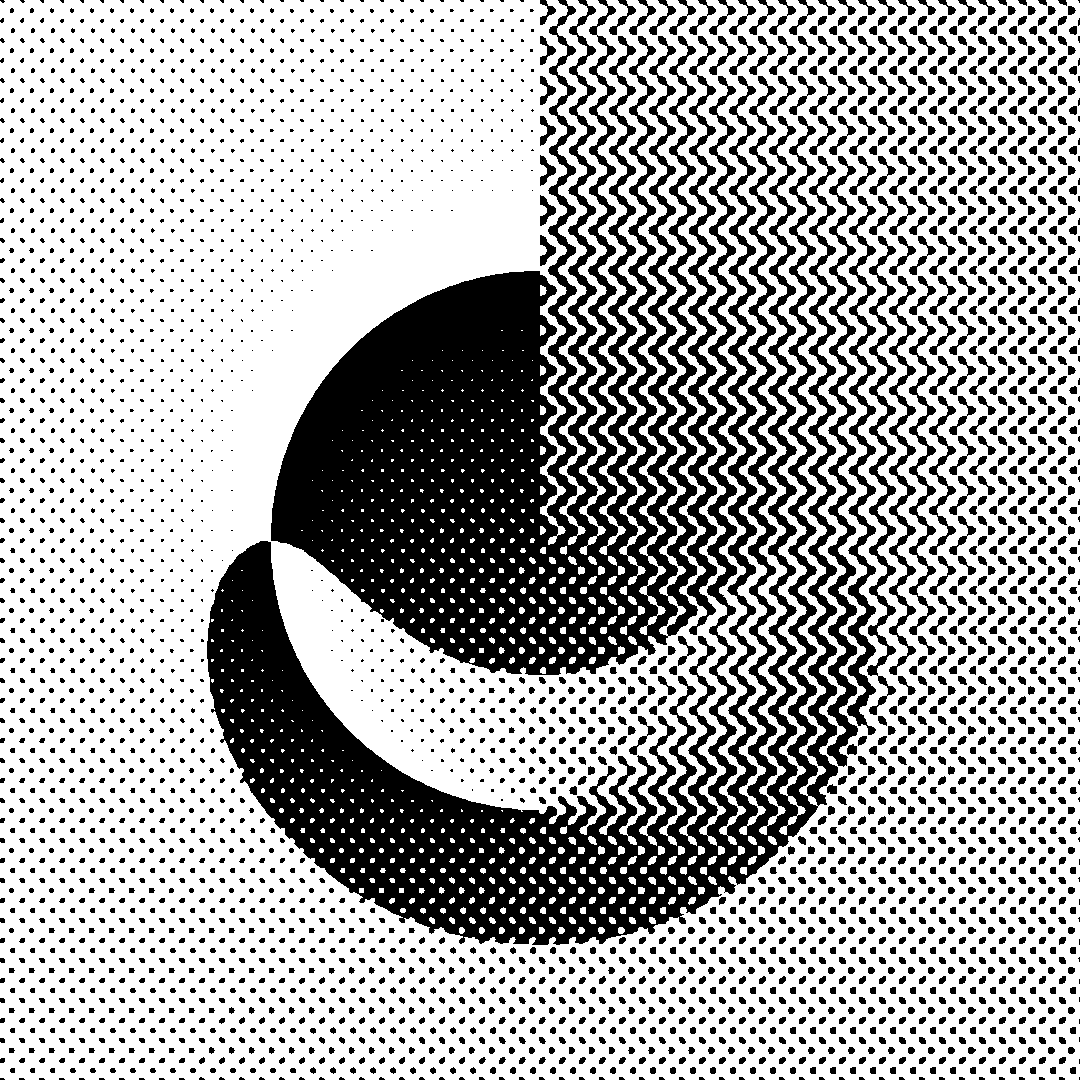Ivan Murit (TexTuring) and Justin Bihan (Stochaster) discuss the differences and similarities between their respective projects regarding image processing software, which look similar but have distinct purposes. On the one hand, TexTuring exploits the reaction-diffusion algorithm to produce shapes that are directly influenced by the image. On the other hand, Stochaster generates patterns with the same algorithm to later merge them with the image.
TexTuring and Stochaster: two approaches to image dithering
TexTuring is a software that generates organic shapes on raster images using a reaction-diffusion algorithm. This mathematical model is specifically found in biology, where it is the basis of many visual patterns in living organisms. TexTuring serves as an interface to explore the finer points of the reaction-diffusion algorithm, applied directly to the image. The generated shapes are organized according to the specificities of the original image. Each element of the texture is sorted according to its neighbouring elements. Depending on adjustable parameters in the software, the algorithm will draw the outlines of a contrasting shape, have a specific texture for certain shades of grey, or completely reform an initial shape by creating apparently random patterns. The generated texture is fluid and fully generative as though it was really organic.
Stochaster is a bitmap conversion tool that creates customizable stochastic patterns. Its reaction-diffusion algorithm can produce all kinds of malleable shapes. The resulting design can be tiled, converted to a texture, and merged with the image. Each setting can have a different amplitude, frequency, and spacing of halftone dots based on the brightness of the image area, thus perfectly simulating all of its gray tones. Stochaster includes stochastic, serpentine or spiral drawing modes. It also includes the standard tools of image processing software (rulers, screen angle, image resolution, etc.). It works on the basis of classic mechanical or halftone reprographic techniques, but with random patterns in order to produce a hybrid result.

The generated pattern of shapes is merged with the image.
Stochaster

The texture is generated from the original image.
TexTuring
With TexTuring and Stochaster we took on the role of designers of tools for other designers. Unlike most multi-function image editors, TexTuring and Stochaster only focus on bitmap conversion and complement an ecosystem of third-party image processing software.
Initially, we designed our tools for ourselves. We both learned how to use standard graphic design software in art school, but we soon realised that many aspects of it had not changed for decades, especially in the field of reprographic techniques. We had easy access to the two bitmap conversion standards, that is, diffusion (pixels) and halftone (lines per inch), but apart from those we knew there was a universe still to explore and experiment with, a world of specimens kept secret by corporations. Our respective researches converged towards a common result, that is, the use of the reaction-diffusion algorithm, which was the means to obtain natural and organic patterns, bringing a pinch of randomness in the visual result. Our different aesthetic interests turned our tools towards their own direction and specificities: TexTuring is an organic and generative approach to image dithering, while Stochaster seeks to simulate and make accessible stochastic (random or frequency modulated) patterns, generally reserved to powerful and expensive corporate software.

The shapes are generated from and within the image.
TexTuring

An ad-hoc halftone reveals all the shades of gray of an image.
Stochaster
The algorithmic explorations of TexTuring and the rendering accuracy of Stochaster truly stand out. TexTuring is a software that encourages experimentation. Its easy-to-use, graphic interface simplifies the available options, focuses on user experience, and enhances the creative aspect of the software. It always surprises the user with the different possibilities of the reaction-diffusion algorithm applied to an image, but also with its several output formats, batch processing, animation, etc. TexTuring has been designed for experimentation in the field of video production, textile, laser cutting, etc. Conversely, Stochaster focuses on accuracy, faithfully reproducing colours and avoiding disruption of the original image. The software operates in three stages: the creation of stochastic patterns with random and sinuous designs; the modelling of the patterns; the merging of the patterns with the image. Stochaster has been designed for both screen and print. It allows easy toggling between screen size and actual print size. A number of technical parameters for digital or printed images are available for precise results: screen ruling (LPI), screen angle, image resolution (DPI), HiDPI/Retina support.
The dissemination of our tools is the logical continuation of our research. It's a means to open up the possibilities offered by image processing. We are convinced that the choice of tool is decisive in the design and production of a project. Moreover, we also hope to see our tools, whose source code is open, modified and adapted according to the wishes of those using them.
Justin Bihan & Ivan Murit

Utilisation du logiciel pour tramer une typographie afin d'en créer une nouvelle.
TexTuring

Utilisation d'un petit motif qui rend la trame semi-mécanique.
Stochaster